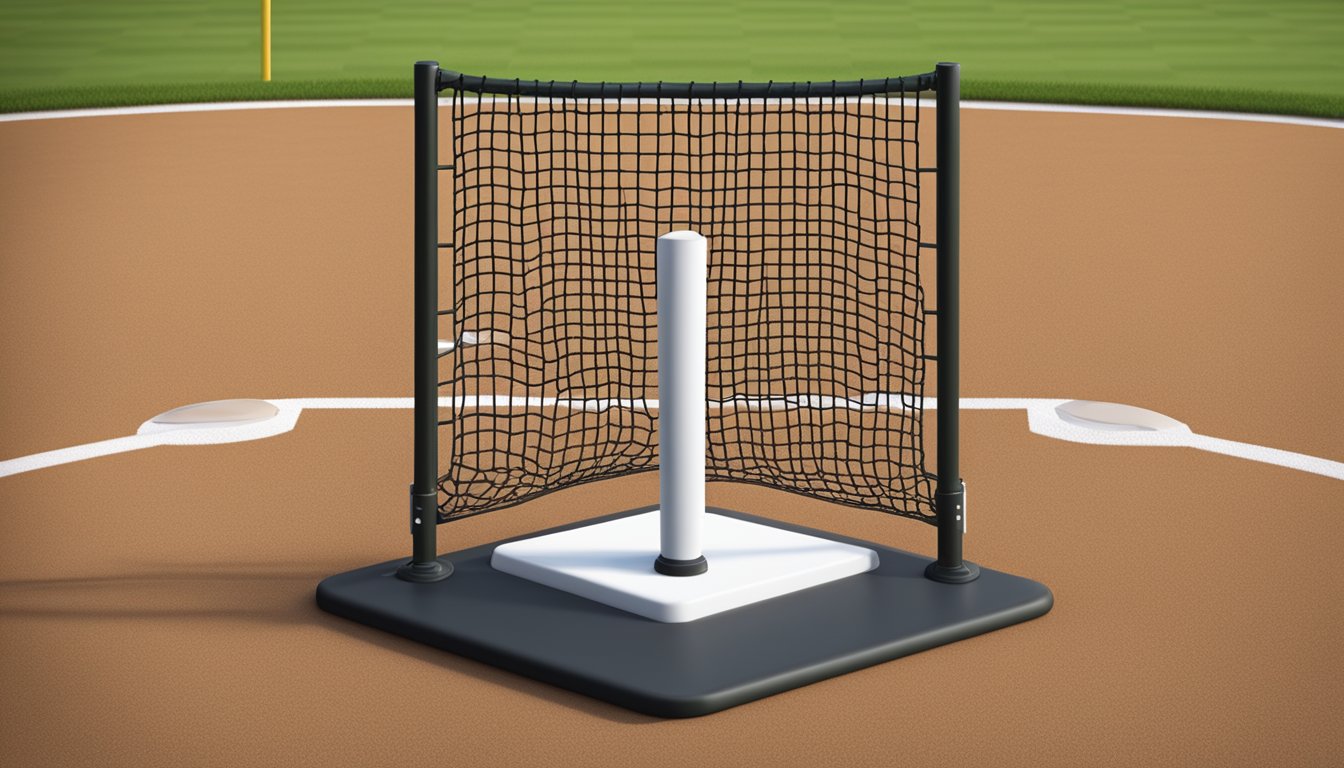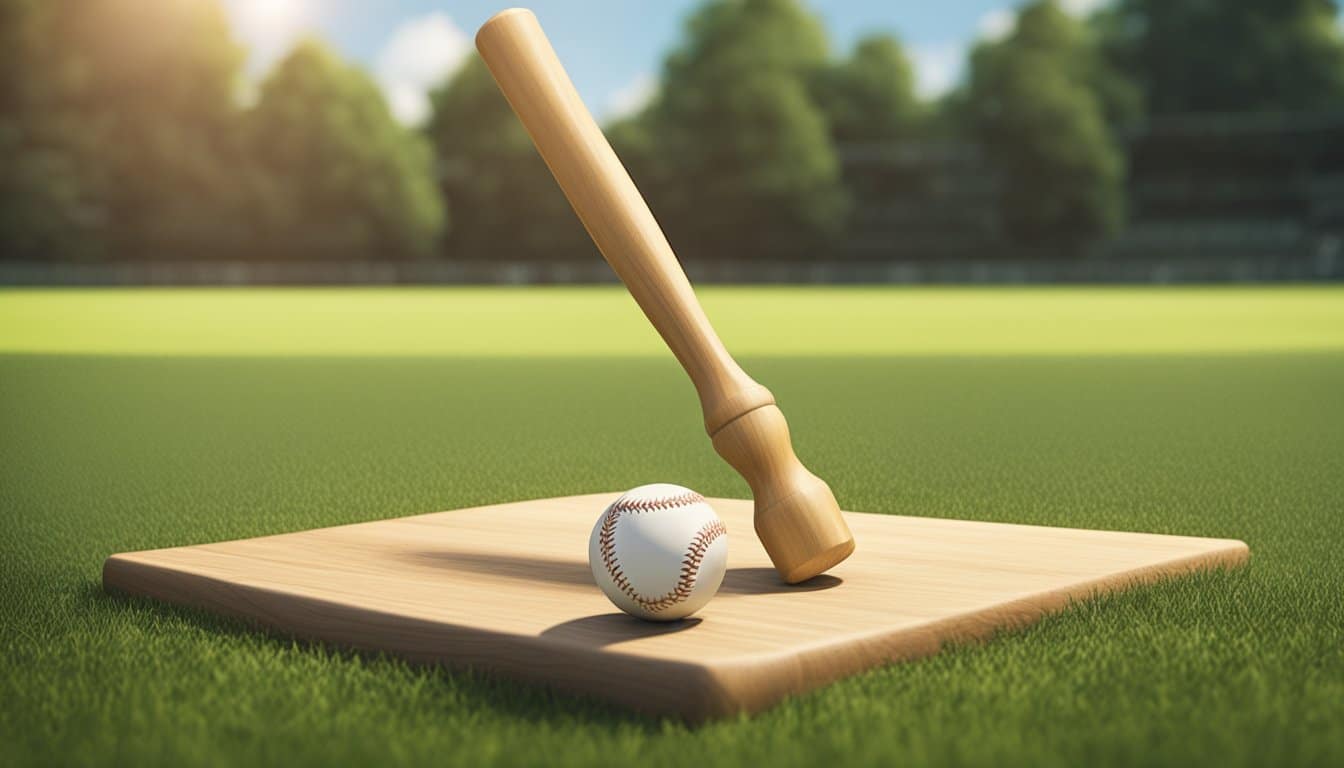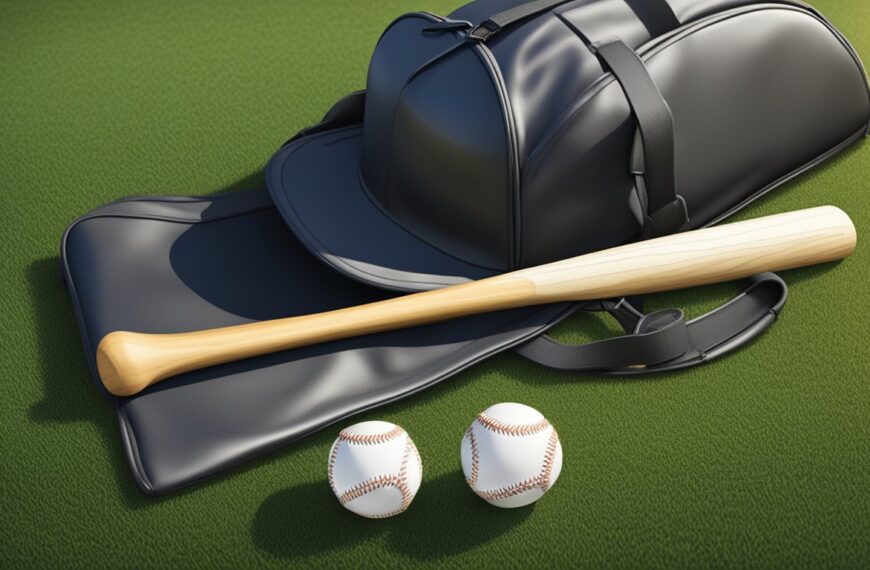Batting tees hold an essential place in baseball and softball, particularly in college and professional training realms. Their simplicity hides their importance as fundamental tools for honing batting skills. Athletes at college and professional levels regularly use tees to reinforce proper hitting mechanics and develop muscle memory. The tees serve as a stationary target, allowing players to practice their swings without the variables introduced by a live pitcher. This controlled environment is crucial for working on swing technique and for isolating specific aspects of the hitting process.
The practice on batting tees provides a consistent point of contact, which is pivotal in training athletes to understand their swing path and point of impact. This focused repetition facilitates improvements in hand-eye coordination and overall batting technique. Furthermore, advancements in batting tee technology have equipped coaches with the tools to provide immediate feedback and tailor training sessions to address individual player needs. Comparisons between tee work and live pitching are also valuable, providing insight into how a batter transitions from practice settings to game scenarios.
Key Takeaways
- Batting tees are integral for developing and refining hitting skills at college and professional levels.
- Tee work allows for repetition and consistency in practicing swing mechanics.
- Technological advancements in batting tees enhance training quality and player development.
Understanding Batting Tees
https://www.youtube.com/watch?v=bp-EsfdBX1Y&embed=true
Batting tees are vital tools for hitters at all levels, honing mechanics and reinforcing swing consistency. In both college and professional training, they serve as foundational aids for individual practice and pre-game routines.
History and Evolution of the Batting Tee
The batting tee traces its origins to baseball’s early days, was refined over time, and remains a staple in batting practice. It began as a simple, stationary object used to elevate the baseball, allowing hitters to focus on swing mechanics without the variable of pitch delivery. Joe Tanner, credited with the invention of the Tanner Tee, transformed the training tool by introducing the Flextop, which allows a more realistic feel for the ball upon contact.
Different Types of Batting Tees
Variety characterizes today’s batting tee market, catering to different training needs and preferences:
- Tanner Tee: Known for its Flextop, which provides a realistic baseball contact feel.
- G Tee: Stands out with its portability and adjustable height feature.
- Tanner Heavy: A more robust version, designed for stability and durability, featuring a metal base.
- Rolled Rubber Top Tees: Offer simplified design with a focus on an all-weather durable hitting surface.
Key Features of Quality Batting Tees
When assessing the best batting tee, certain features stand out:
- Durability: A metal base and solid construction materials resist wear and tear.
- Adjustability: Being able to modify tee height accommodates a range of strike zones.
- Portability: A lightweight, disassemblable design enhances mobility.
- Stability: A broad base prevents tipping during practice.
In practice, hitters rely on these tools to refine their swings, develop muscle memory, and increase hitting accuracy.
Mechanics of Hitting
https://www.youtube.com/watch?v=keVyBnlHqCo&embed=true
Mastering the mechanics of hitting is critical in baseball for both college athletes and professionals. It involves refining swing basics, enhancing hand-eye coordination, and developing muscle memory through repetition to achieve a consistent and powerful batting performance.
Swing Basics
The fundamentals of a successful swing start with the correct stance and grip, ensuring the batter has a solid foundation. A balanced stance with feet shoulder-width apart provides stability, while a firm but relaxed grip on the bat helps in controlling the bat speed and swing plane. The goal is to create a smooth, level swing that allows for contact with the ball in the ideal hitting zone. Proper swing mechanics also involve a well-timed weight transfer from the back leg to the front leg, contributing to the overall power of the swing.
Developing Proper Hand-Eye Coordination
Proper hand-eye coordination is key for a batter to track and hit a pitch accurately. Drills on the batting tee help hitters focus on the ball and fine-tune their swing mechanics without the added variable of pitch speed or movement. They can work on timing and contact precision, practicing how to consistently hit the ball squarely. This ultimately leads to improved bat control and the ability to make adjustments based on pitch type and location.
Muscle Memory and Repetition
Muscle memory develops when a player repeats the correct swing mechanics consistently over time. This repetition cements the movements into the athlete’s muscle fibers, allowing the batter to execute swings automatically and with greater efficiency during high-pressure situations. The use of batting tees is integral in this process, as they allow for a high volume of swings to reinforce muscle memory. Repetitive practice on the correct swing plane and mechanics ensures that each swing becomes more natural and increases the likelihood of successful at-bats.
Practice Drills and Techniques
https://www.youtube.com/watch?v=pzvT71bYw8A&embed=true
In collegiate and professional baseball training, batting tees serve as fundamental tools for developing hitting skills. They allow for a range of drills that focus on various aspects of batting, from the basics of stance and swing to addressing specific technical challenges faced by advanced players.
Tee Ball Drills for Beginners
For those new to the sport, Tee Ball drills establish the foundation of a consistent and effective swing. Here are some fundamental tee ball drills beginners should practice:
-
Stance and Swing:
- Objective: To develop a balanced stance and a fluid swing.
- Drill:
- Assume a balanced stance with feet shoulder-width apart.
- Focus on hitting the ball off the tee with a smooth, level swing.
-
Hand-Eye Coordination:
- Objective: To improve the batter’s ability to track the ball.
- Drill:
- Place the ball on the tee at varying heights.
- Practice swinging to strike the ball squarely, regardless of its position.
Advanced Tee Drills for Experienced Players
Experienced players enhance their proficiency through advanced tee drills that focus on refining their hitting technique:
-
Inside and Outside Pitches:
- Objective: To develop the skill of hitting pitches on different parts of the plate.
- Drill:
- Position the tee inside the strike zone for inside pitches.
- Adjust the tee to the outer edge of the plate for outside pitches.
- Alternate hits to simulate the variation of pitch locations.
-
Angle Batting:
- Objective: To practice hitting the ball at different angles.
- Drill:
- Tilt the tee forward or backward to mimic various pitch angles.
- Hit the ball while maintaining a proper swing plane that matches the angle of the tee.
Drills for Specific Hitting Challenges
Batters can overcome particular hitting challenges through targeted drills:
-
Increasing Power:
- Objective: To build strength and speed in the swing.
- Drill:
- Perform repetitive swings using a slightly heavier bat.
- Focus on driving through the ball with both speed and control.
-
Improving Contact:
- Objective: To enhance the batter’s ability to make consistent contact.
- Drill:
- Use a smaller bat to promote precision in striking the ball.
- Concentrate on hitting the center of the ball to minimize foul balls and weak contact.
The Role of Coaching
https://www.youtube.com/watch?v=1Fjm_PtY42g&embed=true
In baseball and softball, coaching is instrumental in maximizing the effectiveness of training aids such as batting tees. Through structured practice sessions and detailed swing analysis, coaches facilitate skill development among players.
Setting Up Effective Practice Sessions
A coach’s ability to setup effective practice sessions is critical for player development. Application of tools like batting tees ensures consistent repetition and contact points mastery. Coaches need to create a regimen that incorporates tees to address specific skills, like hitting for power or contact. Practices often include:
- Warm-up routines with the tee to reinforce proper mechanics.
- Drills focusing on different sections of the strike zone.
- Progressive training where the difficulty level adapts to player skill.
Analyzing and Correcting Swing Issues
A significant coaching task is using batting tees to analyze and correct batters’ swing issues. This involves:
- Identifying swing path inconsistencies or inaccuracies in contact points.
- Utilizing slow motion video analysis to groove a consistent swing.
- Incorporating coach pitch exercises when transitioning from tee work to live pitching.
A coach-specific approach will help batters make adjustments that can then be repeated on the batting tee to reform muscle memory.
Integrating Batting Tees into Training Regimens
https://www.youtube.com/watch?v=Rg2788fPhZw&embed=true
Incorporating batting tees into training schedules enhances both college and professional hitters’ techniques, focusing on precision and power near home plate.
College-Level Training
At the college level, coaches emphasize the importance of fundamental skills. Batting tees are used to help hitters focus on hitting the ball at various heights and angles, mirroring pitches they might encounter in a game. Specific drills include:
- Tee Work: Players practice their swings with the tee located at multiple spots within the batter’s box to simulate different types of pitches.
- Softball Variations: For softball players, tees are adjusted to practice the upward swing necessary to combat the sport’s underhand pitching.
Professional Athletes’ Workouts
Professional players, or major leaguers, integrate tees into their training to refine their batting skills. Their workouts on the baseball field include:
- High-Velocity Impact: Practice hitting balls positioned on the tee with the same force they would apply in a live game, ensuring that their muscle memory translates to actual at-bats.
- Swing Path Consistency: By repetitively striking balls on a tee, pro players work on maintaining a consistent swing path, vital for successful hits during high-pressure situations.
Training aids, such as batting tees, are instrumental in developing players’ abilities at both the college and professional levels, effectively preparing them to face live pitching across the diamond.
Equipment and Setup
The proper selection and maintenance of equipment, along with its setup, are crucial for effective hitting practice. Athletes and coaches should prioritize these elements to ensure productivity and safety during training sessions.
Choosing the Right Batting Tee
When selecting a batting tee, durability should be a top consideration. A high-quality tee often features metal sections for enhanced longevity. Coaches and players typically prefer models that offer portable and stable bases, allowing for easy transport from the locker room to the field. The tee should accommodate a range of heights to cater to different athletes.
- Material: Metal/High-Density Polyethylene
- Height Adjustability: Yes
- Base Features: Weighted for stability, collapsible for portability
Maintenance and Care for Durability
Regular maintenance is essential to preserve the batting tee’s life cycle. Check all metal sections for signs of wear or damage, and tighten any loose components. Cleaning should be routine, using mild soap and water to protect the tee’s material integrity. Storage in a dry environment, such as a garage or equipment room, prevents rust and decay.
- Inspection Frequency: Weekly
- Cleaning Method: Soap and Water
- Storage Recommendation: Dry, climate-controlled area
Optimal Setup for Hitting Practice
For peak performance, position the batting tee within a batting cage or netted area to safely contain balls. The cage or net should be taut and free of holes to ensure safety and ball containment. To mimic game scenarios, tee placement should vary: inside, outside, high, and low pitches. This practice promotes a more comprehensive training experience, crafting hitters who can adjust to different pitch locations.
- Batting Cage Dimensions: Should allow full-range swings without obstruction
- Setup Location: Even, flat surface
- Tee Placement: Altered based on desired pitch location practice
By focusing on these specific aspects of equipment and its setup for training, players are equipped to develop accurate, powerful swings.
Comparing Tee Work with Live Pitching
https://www.youtube.com/watch?v=ePEsqgMEU6w&embed=true
Batting tees and live pitching each play a crucial role in a player’s development, offering distinct benefits for honing batting skills.
Benefits of Tee Work
Batting tees provide hitters with a controlled environment to practice their swing mechanics. Players have the opportunity to focus on the minutiae of their swing without the variability of a live pitch. Crucial aspects such as bat path, hand placement, and footwork can be isolated and repeatedly drilled. Moreover, tee work enables hitters to practice hitting the inside pitch and driving the ball to the opposite field with precision placement. Here are some specific advantages:
- Consistency: Batters face a stationary ball, allowing them to perform the same swing multiple times.
- Repetition: High volume of swings reinforces muscle memory for improved contact.
- Focus: Without the need to anticipate pitch type and location, players can concentrate exclusively on swing mechanics.
Adjusting from Tee Work to Live Pitching
Transitioning from tee work to facing live pitching requires hitters to apply their refined mechanics against the dynamic challenge of a live pitcher. The speed, movement, and unpredictability of a pitch add complexity to the task of making contact. Here are key aspects of adjustment:
- Timing: Players must learn to synchronize their refined swing with the varying speeds and release points of different pitchers.
- Pitch Recognition: Identifying pitch types and locations is essential for deciding when and how to swing.
- Adjustment: Batters need to master the ability to adjust their swing in real-time, particularly for handling an inside pitch or going for the opposite field against live arm action.
Incorporating both tee work and live pitching into training regimens offers batters a comprehensive approach to developing their hitting abilities.
Advancements in Batting Tee Technology
https://www.youtube.com/watch?v=TK6CEmZ7o5c&embed=true
Batting tee technology has seen significant improvements, both in design materials and technological enhancements. These advancements help batters improve their swing mechanics and develop muscle memory with more accuracy and efficiency.
Innovative Designs and Materials
The Tanner Pro batting tee stands out with its hand-rolled rubber FlexTop which allows for a more realistic feel when contact is made. This design has improved the longevity and durability of tees, which historically comprised of less resilient materials. The inclusion of rubber grips on the tee post also ensures stability and helps decrease movement during practice sessions, a feature appreciated by hitters of all levels, from college athletes to professional players.
Materials have evolved to include weather-resistant components that can withstand the harsh conditions of both Sarasota’s heat and northern cold, allowing for year-round outdoor practice. High-grade steel and reinforced polymers are now commonplace, making the tees not only sturdy but lightweight and portable.
Smart Tees and Technology Integration
Advancements in technology integration have led to the development of smart tees. These tees incorporate sensors and feedback systems to provide instant data to the hitter. They can measure metrics such as swing speed, angle, and point of contact, offering valuable insight for performance improvements.
The combination of durable materials and smart technology transforms the simple batting tee into a sophisticated training tool. Features like Bluetooth connectivity and associated apps enable players and coaches to track progress over time, analyze swings in slow motion, and make data-driven adjustments to training regimes. The integration of technology into batting tee design signifies an evolution from the basic models once used, to tools that can significantly enhance the training experience and player development.
Preparing for Game Day
https://www.youtube.com/watch?v=4STaqKpO-3I&embed=true
Batting tees are instrumental in transitioning from practice settings to the competitive atmosphere of game day. They serve as a tool for hitters to refine their swing and aim for the sweet spot consistently.
Transitioning Skills from Practice to Game
Hitters often use batting tees to simulate various pitch locations and work on specific types of swings during practice. Repetition is key, as it establishes the muscle memory needed for a natural and effective baseball swing. By focusing on hitting the ball at a consistent launch angle and direction, typically aiming for line drives, players develop a feel for making solid contact with a wood bat. This persistent practice away from the live-game pressure helps ease the transition of skills to game situations.
Fine-Tuning Swing for Optimal Performance
To achieve optimal performance on game day, hitters must ensure their swing mechanics are precise. The batting tee assists in this precision by allowing for minute adjustments. ItalicCorrecting the swing path, focusing on contact with the ball’s sweet spot, and finding the appropriate launch angle for various pitches are all crucial elements perfected with the aid of a batting tee. The goal is a fluid, powerful swing that can adapt to different pitching styles and speeds. Here is a simple way to utilize practice time on a tee:
- Begin by rehearsing swings without a ball to emphasize form and technique.
- Progress to soft toss drills, focusing on consistent ball contact with a wood bat.
- Implement varying tee heights and positions to cover the entire strike zone.
- Incorporate a mix of line drive and varying angle swings to simulate game-like scenarios.
Through structured practice using a batting tee, hitters establish a solid base for their swing, which translates into enhanced performance when facing live pitchers in the heat of competition.
Frequently Asked Questions
https://www.youtube.com/watch?v=tU4U_4jtvrQ&embed=true
Within this section, relevant inquiries about the effective use of batting tees in baseball training regimens are addressed, providing clarity on why they are integral to both college-level and professional players’ development.
Why is hitting off a tee considered valuable for baseball players’ training?
Hitting off a batting tee allows players to isolate the swing mechanics and focus on hitting the ball squarely without the variability of pitches. It helps players in developing a consistent swing path and reinforces muscle memory.
Do professional baseball athletes regularly incorporate tee work in their practice routines?
Yes, many professional baseball players include batting tee exercises in their regular training routines. By doing so, they can refine their swings and make adjustments in a controlled setting.
How does a batting tee aid in improving a hitter’s mechanics?
A batting tee provides a static ball which means hitters can repeatedly practice their swing and focus on body positioning, balance, hand-eye coordination, and bat control to develop proper mechanics.
What types of drills can be performed using a batting tee?
Various drills can be executed with a batting tee, including inside and outside pitch drills, high and low ball drills, and soft toss drills. These drill variations help hitters to learn how to adjust their swing and improve contact with different pitches.
At what age should players start practicing with batting tees?
Players can start using batting tees as soon as they begin playing baseball, often around age 4 or 5. Starting early helps cultivate hitting fundamentals and builds a foundation for future skill development.
How has the use of batting tees evolved in baseball training methodologies?
The use of batting tees in training has evolved with advancements in equipment design and an increased understanding of hitting mechanics. Coaches and players now employ tees for more complex drills and to simulate various pitch locations and trajectories.









